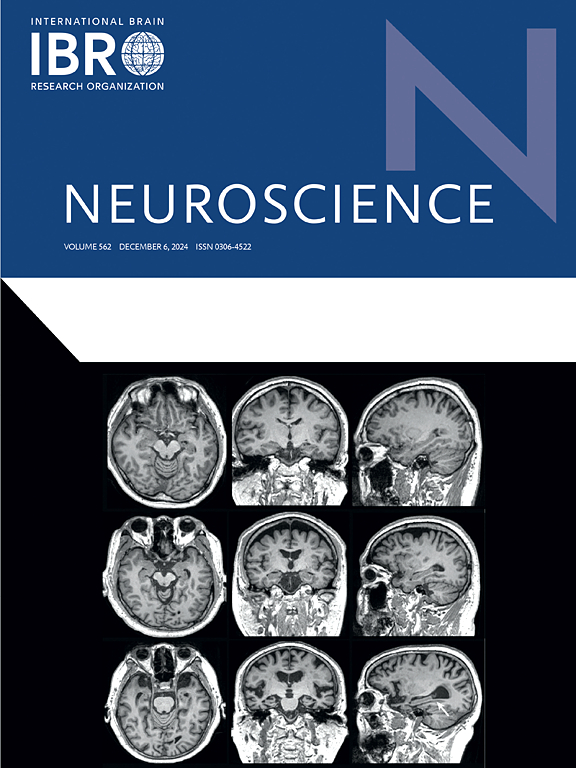Effects of height and growth hormone on the connectivity patterns of resting-state networks in children with GHD
IF 2.9
3区 医学
Q2 NEUROSCIENCES
引用次数: 0
Abstract
Growth hormone deficiency (GHD) can lead to short stature in children and affect brain development, influencing cognition and behavior. Short stature can affect children’s emotional health and motor performance to some extent. Given the role of resting-state networks (RSNs) in maintaining cognitive and behavioral functions, this study investigated the distinct effects of height and GH on RSNs in GHD children by analyzing the changes in functional connectivity patterns of RSNs. We enrolled 31 GHD children, 11 idiopathic short stature (ISS) children, and 15 healthy controls (HC) to assess alterations in functional connectivity patterns of default mode network (DMN), dorsal attention network (DAN), frontal-parietal control network (FPCN), auditory network (AN), sensory motor network (SMN) and visual network (VN). At the nodal integration level, compared with HC, GHD exhibited alterations in FPCN, SMN and VN, while compared with ISS, alterations were in DMN and VN. At the network level, compared with HC, GHD exhibited decreased inter-network connectivity in FPCN-SMN, increased inter-network connectivity in SMN-VN, and reduced intra-network connectivity in AN and VN. Compared with ISS, GHD showed decreased inter-network connectivity in FPCN-DAN and SMN-AN. These results suggest that the synergistic effect of height and GH may affect the motor control function of GHD children by modulating FPCN-SMN and SMN-VN. The independent effect of GH may affect the attention of GHD children by regulating FPCN-DAN, and participate in maintaining the SMN-AN sensory integration pathway. These results could offer new insights into the neural mechanisms of cognitive and behavioral dysfunction in GHD children.
身高和生长激素对GHD患儿静息状态网络连接模式的影响
生长激素缺乏症(GHD)可导致儿童身材矮小,影响大脑发育,影响认知和行为。身材矮小会在一定程度上影响儿童的情绪健康和运动表现。考虑到静息状态网络在维持认知和行为功能中的作用,本研究通过分析静息状态网络功能连接模式的变化,探讨了身高和GH对GHD儿童静息状态网络的不同影响。我们招募了31名GHD儿童、11名特发性身材矮小(ISS)儿童和15名健康对照(HC),以评估默认模式网络(DMN)、背侧注意网络(DAN)、额顶叶控制网络(FPCN)、听觉网络(AN)、感觉运动网络(SMN)和视觉网络(VN)的功能连接模式的变化。在节点整合水平上,与HC相比,GHD表现出FPCN、SMN和VN的改变,而与ISS相比,DMN和VN的改变。在网络层面,与HC相比,GHD在FPCN-SMN中表现出网络间连通性降低,在SMN-VN中表现出网络间连通性增加,在AN和VN中表现出网络内连通性降低。与ISS相比,GHD显示FPCN-DAN和SMN-AN的网络间连通性降低。上述结果提示,身高和GH的协同作用可能通过调节FPCN-SMN和SMN-VN影响GHD儿童的运动控制功能。生长激素的独立作用可能通过调控FPCN-DAN影响GHD儿童的注意力,参与维持SMN-AN感觉统合通路。这些结果可能为GHD儿童认知和行为功能障碍的神经机制提供新的见解。
本文章由计算机程序翻译,如有差异,请以英文原文为准。
求助全文
约1分钟内获得全文
求助全文
来源期刊

Neuroscience
医学-神经科学
CiteScore
6.20
自引率
0.00%
发文量
394
审稿时长
52 days
期刊介绍:
Neuroscience publishes papers describing the results of original research on any aspect of the scientific study of the nervous system. Any paper, however short, will be considered for publication provided that it reports significant, new and carefully confirmed findings with full experimental details.
 求助内容:
求助内容: 应助结果提醒方式:
应助结果提醒方式:


